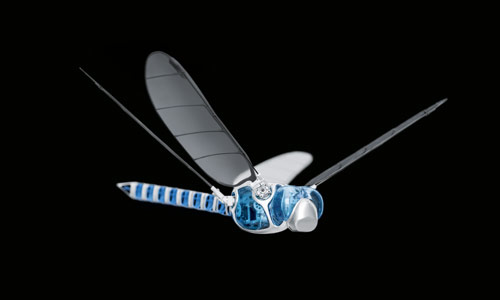It’s amazing how great minds can think alike. At the end of last year, TechJect created this robot dragonfly, and now, we have another super cool one to join it in the skies!

Compared to the TechJect Dragonfly, it’s clear that the BionicOpter is a little bit more like an actual dragonfly. It has two pairs of carbon fiber and foil wings, and a head and a tail. However, with a wingspan of 70 cm and a body length of 48 cm, BionicOpter isn’t just your average robot insect.
The robot itself is controlled by nine servos (mechanisms that use feedback to correct and control performance), a two-cell lithium ion battery, and an ARM microcontroller. Its head and tail are moved by passing electrical current through nitinol (an alloy of nickel and titanium) muscles. But the coolest part about BionicOpter has to be the wings.
The primary ability of BionicOpter as a robot is its ability to fly stably. Like a real dragonfly, this robot can move both forwards and backwards as well as hover. The computer controls the frequency of individual wings at around 15-20 Hz (wing beats per second), rotational twisting at 90 degrees, and amplitude (up and down motion) at 50 degrees. These controls allow the wings to work perfectly when it receives commands. Using wing data and body position, BionicOpter also solves for vibrations that could occur in both indoor and outdoor flight, making BionicOpter the flying boss. And yet such a complex robot can be easily operated by a smartphone app. The robot automatically makes flying adjustments.
All this makes flying the BionicOpter through the air a breeze.


















































